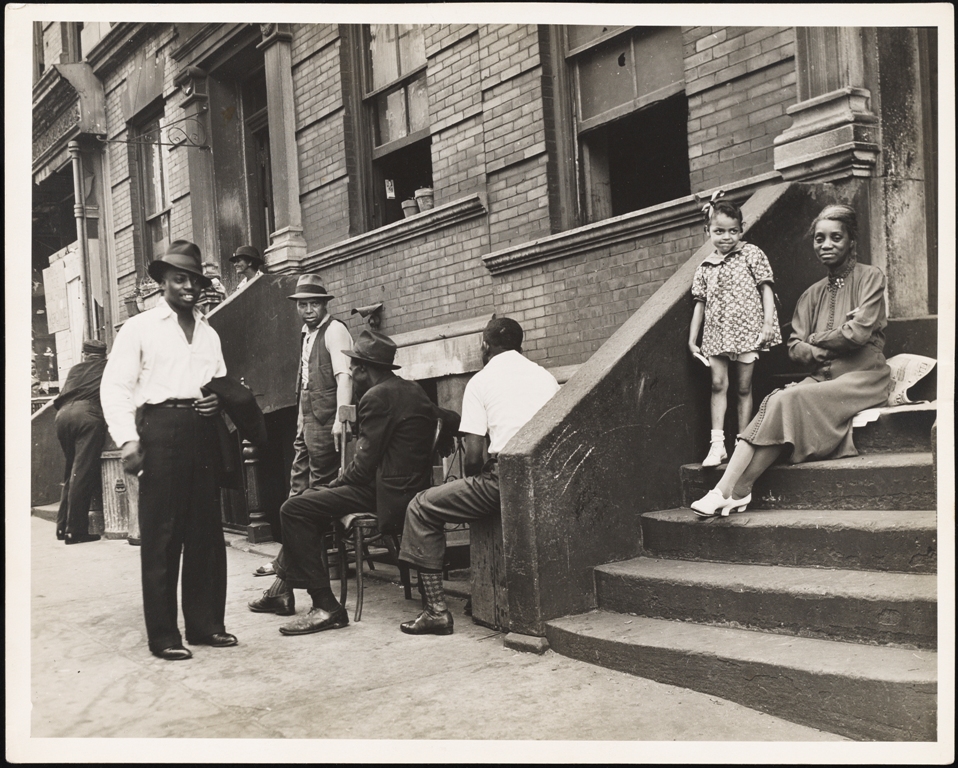
United States Army’s Black 10th Cavalry who fought at San Juan Hill, Cuba
Before Harlem and Bedford-Stuyvesant became the largest African-American communities in the city,there was San Juan Hill. Centered on Amsterdam Avenue and 62nd Street, it was home to thousands of working-class and poor black New Yorkers in the late 19th and early 20th centuries. The neighborhood’s name supposedly came from an all-black cavalry unit that fought at the battle of San Juan Hill during the Spanish-American War.

San Juan Hill's vibrant jazz scene served as home to famed Jazz musician Dizzy Gillespie.
Like most parts of the city then, San Juan Hill’s streets were lined with tenements. There was a vibrant jazz scene, but also racial tension at the turn of the century with whites on the east side of Amsterdam.San Juan Hill met its demise after World War II. First, several blocks were demolished to make way forthe Amsterdam Houses, a pretty typical red-brick, high-rise public housing complex.
Then, in the 1950s, much of the neighborhood was deemed a slum, and it was torn down to make way for Lincoln Center.

Harlem Historic Faces and Places Architecture TOUR
Tour one of Manhattan's most historic and lively neighborhoods on this Harlem architecture tour. Learn about it's iconic renaissance, check out top landmarks and attractions and gain a deeper understanding of the people that make Harlem so unique.

East Harlem Street Art Walking TOUR
No New York City neighborhood has more murals per square mile than East Harlem, aka El Barrio. Memorials, political statements, concept pieces — dozens of spray-painted masterpieces adorn the walls of buildings throughout this Upper Manhattan region, representing years of expression, rebellion and therapy for local artists.
Black Manhattan's Long-Gone San Juan Hill

In the early 20th century, Lincoln Square’s streetscapes hugged the ground with rows of tenements and brownstones, punctuated by warehouses and industrial lofts. Its residents were mostly working classand poor, with a notable contingent of artists and bohemians. On its eastern fringe stood a variety of theaters and music halls. Squeezed into the middle, roughly from 59th to 65th Streets between Amsterdam Avenue and the 11th Avenue railroad tracks, was San Juan Hill, one of the largest black neighborhoods in Manhattan before the rise of Harlem.
Historian Marcy Sacks, author of “Before Harlem: The Black Experience in New York City before WorldWar I” (University of Pennsylvania Press, 2006). As I stand outside two of the neighborhood’s last old houses, 242-244 West 61st Street, with new construction looming beside them.
San Juan Hill’s “tall,monotonous tenements” were “the worst type which the city affords.” Up to 5,000 people lived jammed into a single block; beds were often used in shifts, shared by boarders. Neighborhood was named to honor the United States Army’s black 10th Cavalry, which fought at the battle of San Juan Hill during the Spanish-American War in 1898.